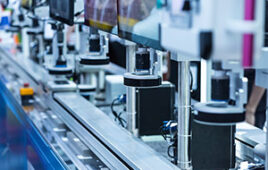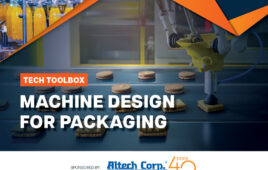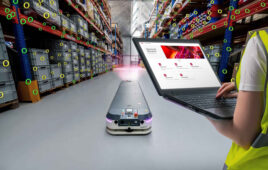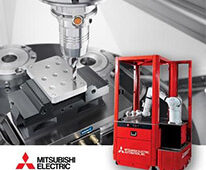The right motor will ensure product is transported through a warehouse or facility without the damage often caused through accumulation.
Danielle Collins, Contributing Editor
Accumulation conveyors provide buffer zones in material handling systems to manage product flow, which is especially important when there is an imbalance between upstream and downstream capacity. But accumulation often results in backpressure, which can damage products or cause downstream operational problems.
Common drawbacks of product accumulation
Traditional conveying systems experience backpressure during product accumulation due to upstream pallets successively bumping into each other as they stack up behind the lead pallet. This backpressure can generate hundreds of pounds of force and, more importantly, compromise the integrity and quality of the products being accumulated.

In addition, a traditional conveyor system typically runs non-stop, regardless of the actual production requirements. This means the conveying media – belt or chain – also runs continuously beneath the product, even during accumulation, while the product is stationary. Not only does this cause unnecessary wear and tear on the conveyor and the motor, it also wastes energy.
The traditional solution
So, how do conveyor designers and manufacturers typically deal with the extra loads, friction, and wear and tear that occur during accumulation? Simple: up-size the conveyor system.
Of course, this means heavier-duty (and sometimes larger) components, which adds cost, both in terms of the conveyor itself and in higher energy usage. Plus, accumulation and backpressure still have to be managed with pneumatic stops and eyes, which require PLC I/O, wiring, and code development, driving extra costs and effort into the project.
A better alternative: zero pressure accumulation
Accumulation is a necessary part of many processes, but if it damages the product or jeopardizes previous assembly or other operations, it’s a detriment to the overall production and quality – not to mention the economic impact of scrap, rework and stopped production. Unfortunately, this is often the case with traditional accumulation, due to the impacts and shock loads the products experience as they “pile up” behind one another.
The solution: individually managed accumulation zones
Referred to as “zero pressure accumulation,” a conveying system with individually managed accumulation zones ensures there’s always a gap between products, which provides gentle product handling by eliminating the hundreds of pounds of backpressure that can cause product damage. Each individual zone can handle up to 200 lb, so the ability to transport heavy loads is not compromised.

The team at Glide-Line has seen the consequences of traditional accumulation—including wear and tear on conveyor belts and chains that move underneath stationary pallets.
Zero pressure accumulation eliminates wear and tear due to friction by dividing the conveying system into multiple zones and operating each zone only as the process requires. This means that the conveyor media stops during accumulation rather than running continuously under the stopped product. Eliminating friction and running the motors and conveyor media only when needed drastically reduces energy consumption and wear and tear on the conveyor.
How zero pressure accumulation works
To manage each zone individually, the single ac motor used on a traditional conveyor is replaced by multiple, small 24 V brushless dc motors – one for each zone. Each motor incorporates a driver card with integrated “zero pressure” logic, and the motors are daisy-chained together to ensure that each zone operates only when needed. Pallet sensors are wired directly to the driver card for the motor, which means even less I/O, fewer motor starters or VFDs, less code development, simpler wiring and reduced overall effort. Not only does this simplify the control scheme and hardware costs, it significantly reduces wear and replacement parts.

The team decided there must be a better solution. That’s why they’ve designed a zero pressure accumulation option for Glide-Line conveyors.
The dc motors used in Glide-Line ZP zero pressure accumulation, for example, are compact and have virtually silent operation, making them suitable for noise-sensitive environments (or those where noise is already at or near maximum acceptable levels). Not only does individual zone management reduce wear and tear on the conveyor, the 24 Vdc motors are constructed with bearings that have a 300,000 hour lifespan, which virtually eliminates the need to replace motors during the conveyor’s operational life. Despite the use of multiple motors, ZP conveyors have lower maintenance requirements and higher reliability than traditional conveyors.

No more damaged product, scrap, rework, and stopped production due to the bumps and shocks that products endure during traditional accumulation. Instead of increasing cost, as many product “improvements” do, Glide-Line ZP reduces cost through energy savings, fewer wear parts, and reduced maintenance.
Glide-Line
glide-line.com
Filed Under: Factory automation, Conveyors, Material handling • converting





This choice certainly makes sense. But it seems that somehow more controlling must be done, and while linking the drives to automate the controlling is the logical approach it would be handy to know about response times and the external command requirements. I have seen the problems that come from constant speed conveyors, and the posting is certainly correct on those points.